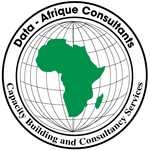|
|
GIS For Health Sector Programme Management Training
USD 2,950 |
Venue: Nairobi
This course offers an introduction to GIS and how it is used in public health and epidemiological research. It will introduce participants to the basics including working with and integrating spatial and non-spatial data; geographic scale and spatial precision; decoding; visualization; thematic mapping; and understanding spatial relationships. Specific skills and tools will be introduced in relation to assessing exposure to a range of environmental risks, and a particular focus will be given to methods for spatial linkage of exposure, contextual and confounder information for epidemiological or health risk assessment studies.
COURSE OBJECTIVES
By the end of this course the participants will be able to:
- Understand the basics of spatial data and its role in decision making
- Undertake spatial analysis of environment and health data
- Explain why geographic data and tools are important for health decision makers
- Understand geography as a unifying framework and GIS as a tool to collect, link, analyze, visualize, manage, and share data and information
- Distinguish between the different tools used to collect, analyze, and manipulate geographic data
- Communicate with technical specialists to develop program-specific geographic products Work with and integrate spatial and non-spatial data
- Integrate data from different geographic scales and spatial precision
- Geocode and visualize spatial data
- Investigate spatial patterns of health risks and disease rates
- Produce thematic maps and reports
DURATION
5 Days
WHO SHOULD ATTEND
Public health practitioners, epidemiologists, exposure scientists, quantitative health geographers, risk assessors, students.
COURSE CONTENT
Module 1: GIS for Health Sector Programme Management Introduction
- Introduction to GIS
- Basic concepts in GIS
- GIS for health applications
- GIS advantages in Health
- Introduction to Quantum GIS(QGIS) and its user interface
Module 2: Spatial data collection techniques for health applications
- Digitizing and scanning of maps
- Using GPS
- Using GPS utility software for managing and downloading and managing data
- Using Mobile Phones (ODK) for GIS data collection
- Importing GPS data to Quantum GIS
- Extraction of data from GPS
- Mapping GPS data
- Bringing ODK data into a GIS
Module 3: Data Visualization
- Map layers in GIS
- Composing a GIS layout from GIS layers
- Geoprocessing
- Key elements of a map
- Composing a map
- Case study
Module 4: Geocoding tabular data
- Creating health-care map layers
- Spatially join and aggregate point data to create choropleth maps
- Building and coding the new variables
- Using data from databases database management
- Project maps for health data analysis at different geographic scales
- Techniques of overlaying GIS data
- Extracting subsets of GIS data for mapping
- Prepare incidence and prevalence maps
Module 5: Case Study: Studying disease outbreaks
- Visualize malaria mortality by regions
- Use buffer analysis to identify affected populations
- Participatory mapping for disease outbreaks
GENERAL NOTES
- This course is delivered by our seasoned trainers who have vast experience as expert professionals in the respective fields of practice. The course is taught through a mix of practical activities, theory, group works and case studies.
- Training manuals and additional reference materials are provided to the participants.
- Upon successful completion of this course, participants will be issued with a certificate.
| Nairobi | Dec 09 - 13 Dec, 2024 |
Class Session: 08:00:am - 04:00:am
| USD 2,950.00 | (Kigali) |
| USD 4,500.00 | (Dubai) |
| USD 1,500.00 | (Nairobi) |
| USD 1,500.00 | (Mombasa) |
DUNCAN KARIUKI +254723360025
Tags: |
GIS Health Sector Management Training Public health practitioners epidemiologists exposure scientists quantitative health |



